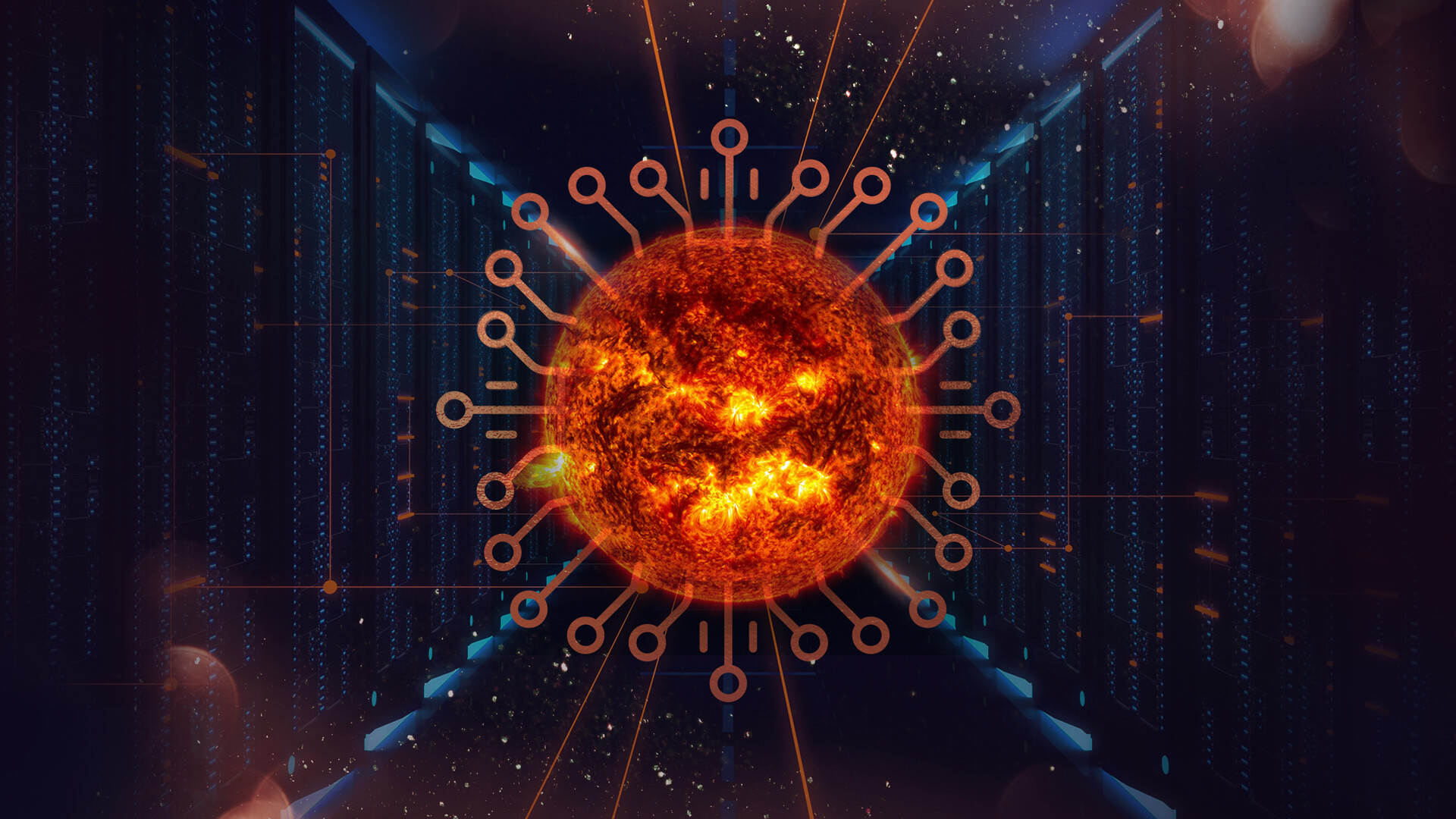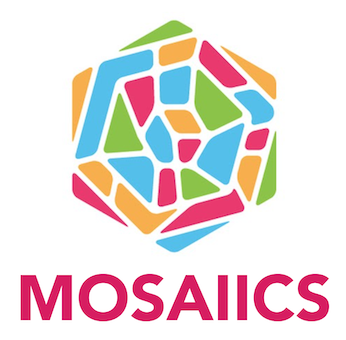
INTERNATIONAL WORKSHOP ON
MACHINE LEARNING AND COMPUTER VISION
IN HELIOPHYSICS
19-21 April, 2023
Sofia, Bulgaria
and online
Wednesday, April 19, 2023
8:30 – 9:00 Registration and Introduction
09:00 – 09:40 (Invited) Michele Piana – Artificial intelligence for space weather forecasting: data-driven and physics-informed approaches in research and operational settings
Session 1 – Machine Learning / Computer Vision Techniques
09:40 – 10:00 Vanessa Mercea – A Machine Learning Enhanced Approach for Automated Sunquake Detection in Acoustic Emission Maps
10:00 – 10:20 Francesco Pio Ramunno – Modeling Solar Images from SDO/AIA with Denoising Diffusion Models
10:20 – 10:40 Manuel Luna – Towards a technique for automatic detection and characterisation of oscillations in solar filaments
10:40 – 11:20 Coffee Break
11:20 – 11:40 Connor O’Brien – Non-Deterministic Models of Solar Wind Propagation from L1 to the Earth
11:40 – 12:00 Jeremiah Scully – Mitigation of Radio Frequency Interference in Solar Radio observations using Generative Adversarial Networks
12:00 – 12:20 Matthew Lennard – Fast Feature Recovery for Flux Emergence Forecasting in the Photosphere using Neural Networks
12:20 – 12:40 Juan Esteban Agudelo Ortiz – Deep Learning techniques implementation for the generation of stokes parameters and atmospheric parameters in the solar context
12:40 – 14:20 Lunch
14:20 – 14:40 Talha Siddique – A Cluster of Machine Learning Enabled Magnetometer System For Online Training And Prediction of Geomagnetic Disturbances
14:40 – 15:00 Gonzalo Cucho-Padin – Three-dimensional reconstruction of ion flux in the Earth’s northern cusp based on artificial neural networks
15:00 – 15:20 Daniel Carpenter – A Customized Distance Metric for Explainable In-Situ Solar Wind Clustering
15:20 – 15:40 Andong Hu – Multi-Hour-Ahead Geoelectric Fields Forecast Using Multi-fidelity Machine Learning Method
15:40 – 16:20 Coffee Break
16:20 – 17:00 (Invited) Enrico Camporeale – Data-Driven Discovery of Fokker-Planck Equation for the Earth’s Radiation Belts Electrons Using Physics-Informed Neural Networks
Session 2 – Machine Learning / Computer Vision Applications in Heliophysics
17:00 – 17:20 Spyros Kasapis – Turning Noise into Data: Characterization of the Van Allen Radiation Belt Using SDO Spikes Data
17:20 – 17:40 Ricardo Gafeira – PCA-NN model for TEC with space weather parameters as predictors: tuning of NN algorithms and input parameters
17:40 – 18:00 Benoit Tremblay – SuNeRFs: The Sun as a (fully-resolved) Star
18:00 – 20:00 Reception
Thursday April 20, 2023
Session 2 – Machine Learning / Computer Vision Applications in Heliophysics
9:00 – 9:40 (Invited) Athanasios Papaioannou – Predicting Solar Activity (flares, CMEs & SEPs) using Machine-Learning
9:40 – 10:00 Hanne Baeke – Classification of Solar Flares using Data Analysis and Clustering of Active Regions
10:00 – 10:20 Hemapriya Raju – Dynamic time based eruptive flare prediction using machine learning
10:20 – 10:40 Mohamed Nedal – Predicting the Solar Energetic Proton Integral Flux with Deep Learning Models
10:40 – 11:20 Coffee Break
11:20 – 11:40 Suhaila Binti M Buhari – Equatorial Plasma Bubble Prediction Model Using Satellite Data
11:40 – 12:00 Philippe Garnier – Martian bow shock detection with machine learning
12:00 – 12:20 Pearse Murphy – Automatic recognition of solar radio bursts in NenuFAR observations
12:20 – 12:40 Akhil Gunessee – Can a deep learning approach of detecting solar radio bursts perform better than the interquartile range threshold outlier detection method?
12:40 – 14:20 Lunch
14:20 – 14:40 Mario Fernandez – deARCE solar burst detection system applied to unlabeled e-Callisto data
14:40 – 15:00 Andrea Diercke – A Universal Method for Solar Filament Detection from H-alpha Observations using Semi-supervised Deep Learning
15:00 – 15:20 Aparna Venkataramanasastry – Applying machine learning to find Filament Chirality
15:20 – 15:40 Alin Paraschiv – Predicting the Geoeffectiveness of CMEs Using Machine Learning
15:40 – 16:00 Coffee Break
16:00 – 18:30 Poster Session
James Wanliss – Forecasting Space Weather with Physics-Based Input and Temporal Convolutional Neural Networks
Milo Buitrago-Casas – A real-time solar flare alert system for early flare physics studies: Exploratory data analysis
Grégoire Francisco – Insight on Flare Forecast with Explainable Deep Learning
Christoph Schirninger – Deep learning image-burst stacking for post-processing of high-resolution ground-based solar observations
Adeline Paiement – Removing cloud shadows from ground-based solar imagery
Niels Sayez – Segmentation, grouping and classification of sunspots from ground-based observations using deep learning methods
Iaroslav Gorbachev – Application of Deep Learning techniques for Stokes inversions using the Milne-Eddington approximation based on GRIS data
Susan Palacio Salcedo – Automatic classification of Range-Time-Intensity maps of Equatorial Spread-F
Julio Hernandez Camero – Building a Coronal Mass Ejection source region catalogue for Machine Learning based space weather forecasting
Maike Bauer – Automated CME detection and tracking in HI
Valeria Sieyra – Understanding CME deflections
Saida Milena Díaz Castillo – Exploring U-net + LSTM networks for classification and segmentation of evolving granular structures
Daniel Collin – Forecasting solar wind speed from solar EUV images
Aatiya Ali – Understanding Predictability of Solar Proton Events from GOES statistical features and MHD coronal models.
Kamen Kozarev – Improving LOFAR Solar Radio Imaging Observations With Machine Learning
19:00 – 21:00 Conference Dinner
Friday April 21, 2023
Session 2 – Machine Learning- and Computer Vision-Based Tools
9:00 – 9:40 (Invited) Robert Jarolim – Physics informed neural networks and application to solar magnetic field simulations
9:40 – 10:00 Senthamizh Pavai Valliappan – Performance analysis of AI generated solar farside magnetograms in EUHFORIA
10:00 – 10:20 Jorge Amaya – Parametrization of solar active regions using Variational Autoencoders
10:20 – 10:40 Hannah T. Rüdisser – Automatic Detection of Interplanetary Coronal Mass Ejections
10:40 – 11:20 Coffee Break
11:20 – 11:40 Felix Nakotey Minta – Forecasting the Transit Time of Earth-directed Halo CMEs Using Artificial Neural Network: A case study application of GCS forward-modelling technique
11:40 – 12:00 Harshita Gandhi – Probing the True Nature of CMEs using GCS-based Large Statistics of Multi-viewpoint Observations
12:00 – 12:20 Henrik Eklund – Artificial neural network based spatio-temporal deconvolver for refinement of solar images
12:20 – 12:40 Slava Bourgeois – Machine Learning/Mathematical Morphology coupling for solar features detection
12:40 – 14:20 Lunch
Session 4 – Machine Learning- and Computer Vision-Based Tools
14:20 – 15:00 (Invited) Alexander Engell – SPRINTS: A machine learning ecosystem for forecasting solar-driven events and scientific event crowd-sourcing
15:00 – 15:20 Manolis Georgoulis – Benchmark Datasets for Solar Weather Forecasting Applications
15:20 – 15:40 Oleg Stepanyuk – Advanced Multi-Instrument Image Processing and Feature Tracking for Remote CME Characterization with Convolutional Neural Network
15:40 – 16:20 Coffee Break
16:20 – 16:40 Mattia Mancini – Making LOFAR Data Accessible to the Solar and Space Weather Community
16:40 – 17:00 Shane Maloney – ARCAFF Project Early Results
17:00 – 17:20 Christopher Prior – ARTop: a program to calculate novel topology-based predictive metrics of active region magnetic field structure.
17:20 – 17:40 Simon Mackovjak – Feasibility study of data-driven Autonomous Service for Prediction of Ionospheric Scintillations (ASPIS)
17:40 – 18:00 Katya Verner – The Very First NASA AI/ML Crowdsourcing Challenge Results Using SOHO/LASCO Data
18:00 – 18:30 Discussion and Farewell
